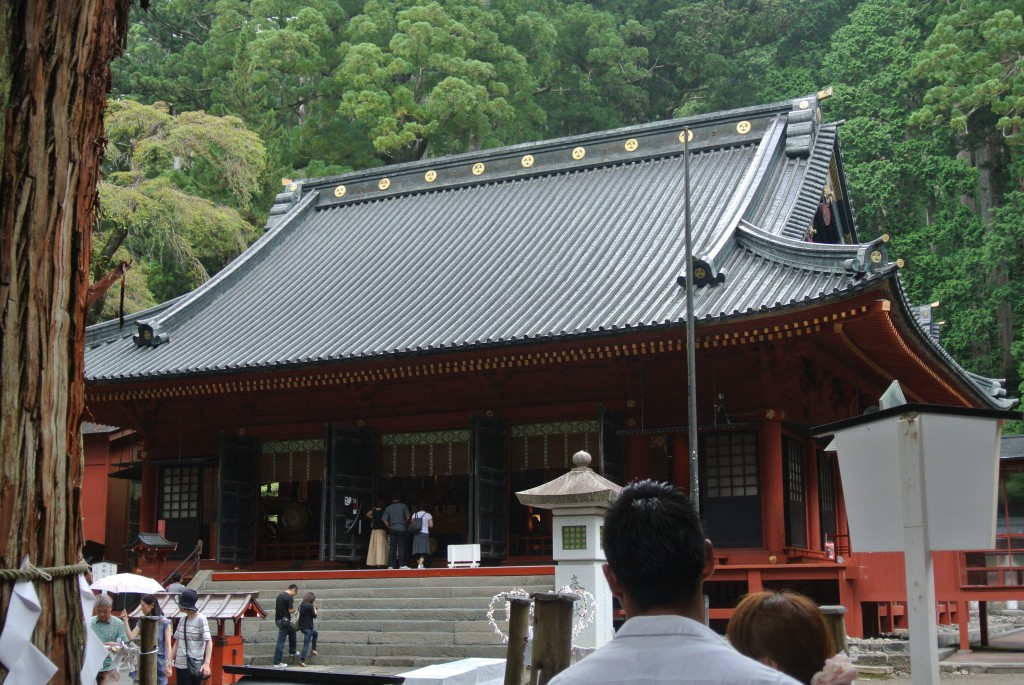
View of the Futarasan honden, built in 1619
Futarasan Shrine is part of the complex, along with Toshogu shrine and Rinno-ji temple, that makes up the World Heritage Site of Nikko. it was founded in 767 by a monk called Shodo Shonin and dedicated to three Izumo kami, principally Okuninushi (also known as Onamuchi).
The traditional approach to the shrine was over the Shinkyo Bridge, to which an interesting legend is attached. According to Joseph Cali in his book Shinto Shrines, when Shodo Shonin prayed for help to cross the River Daiya, the water god Jinja Daio appeared and tossed two great snakes across the water, forming a bridge over which the monk was able to pass.
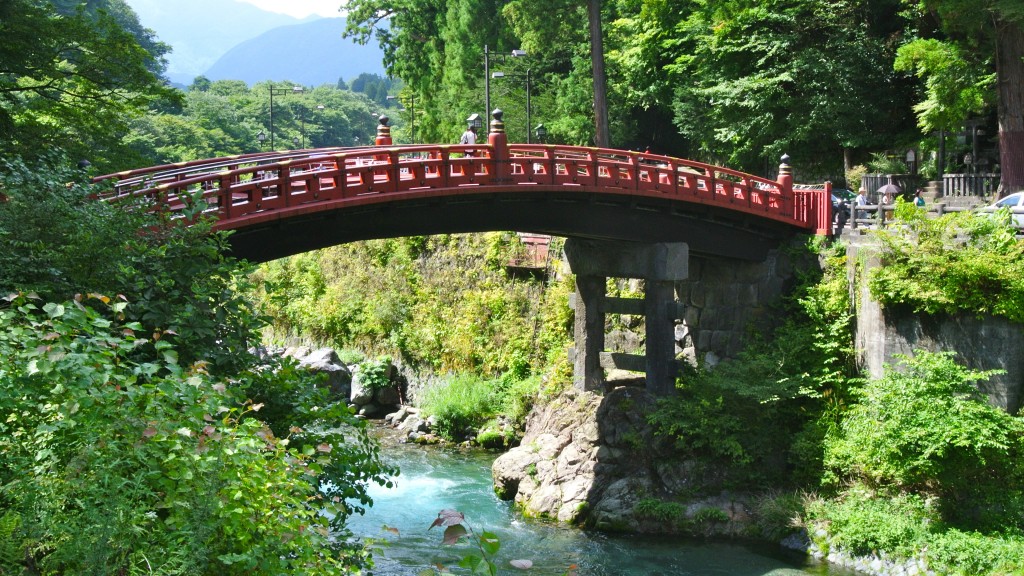
A bridge formed by two snakes, according to legend
Mount Nantai constitutes Futarasan Shrine’s main go-shintai (sacred body), with two other mountains playing a similar role for the two other enshrined kami. Interestingly, Nantai (男体?) means “man’s body”, as if to suggest that it is the physical manifestation of a spirit. Wikipedia notes that “The mountain not only provides water to the rice paddies below, but has the shape of the phallic stone rods found in pre-agricultural Jōmon sites.”
The main building is the Honden, built in 1619. ‘It is a magnificent structure,’ comments Cali, noting ‘the complex roof of black-lacquered copper tiles and lots of gold trim’. There happened to be a wedding there when I visited, and the open-sided aspect allowed visitors to share in the joyful occasion.
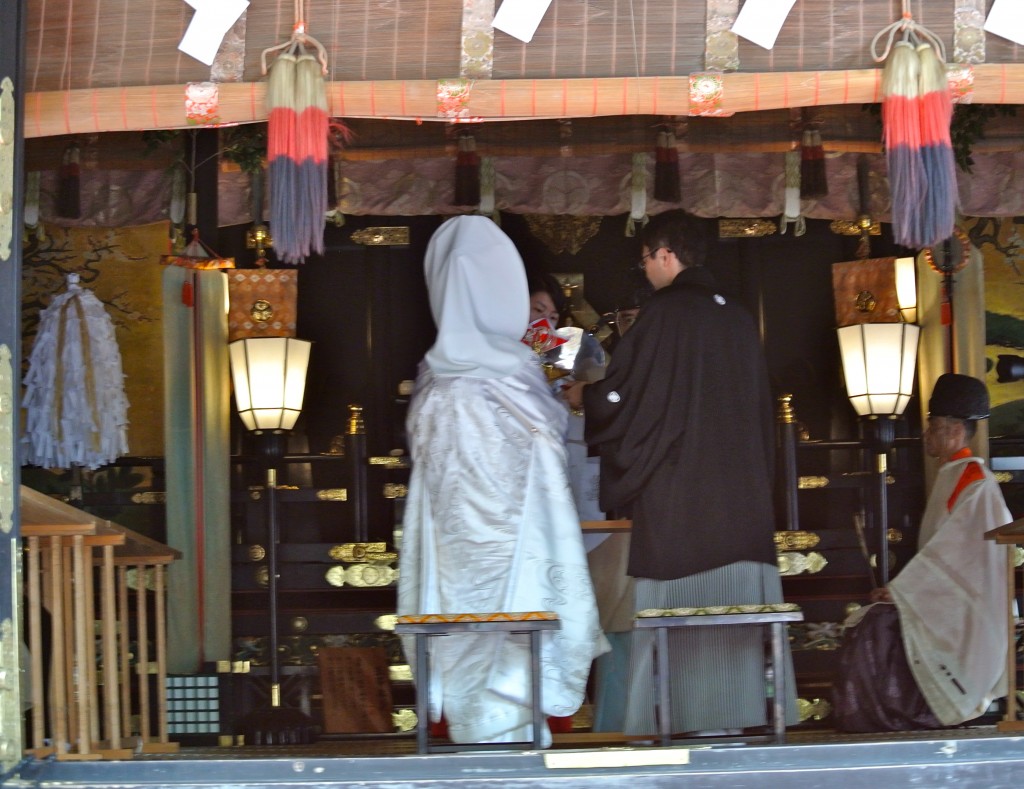
Because the Chinese characters for Okuni can also be read as Daikoku, one of the Seven Lucky Gods, there is a Daikoku hall at the shrine full of sculptures of the colourful character.
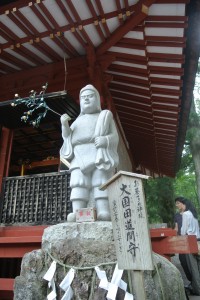
Daikoku in front of the Daikoku Hall
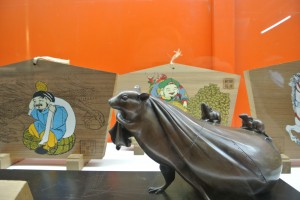
Okuninushi's familiar is a mouse, hence also Daikoku's
There are also some unique fortune-telling features outside. One consists of throwing a ring onto a row of sticks. ‘Just one successful throw will predict good luck,’ says the accompanying sign. One woman I saw got all three rings onto the sticks, so she sure is going to have a lucky year. Another fortune telling device consisted of plastic sushi in a circular drum, which was spun round. One’s fortune depended on which sushi piece ended up closest to the line.
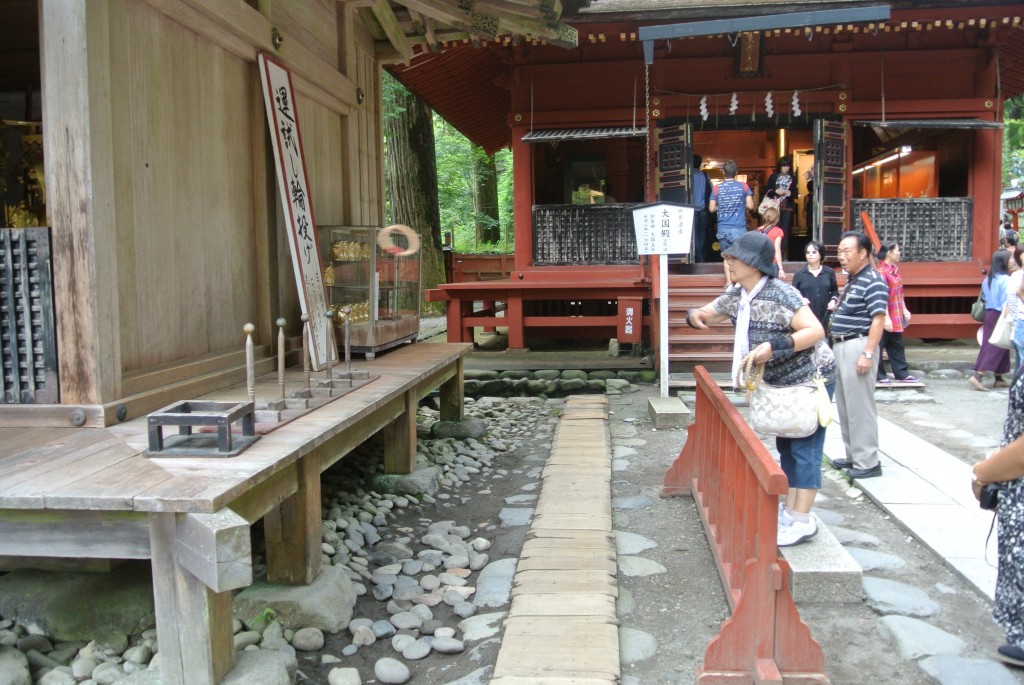
Ring-throwing for good fortune
In the precincts was a pleasant pool of spring water, with a sign asking people not to throw coins into it. No doubt the custom stems from European wishing-wells, though I wondered why the shrine authorities should object so much. Perhaps it stemmed from the polluting nature of money being tossed into clear spring water, though in ancient Japan it was common practice to make offerings of mirrors and other objects in sacred pools. Later in the afternoon, watching a miko going around collecting money offerings from all the prayer spots at the various shrines (about a dozen in all), it occurred to me there may be a more practical reason. It simply wasn’t convenient to collect the money from the pool.
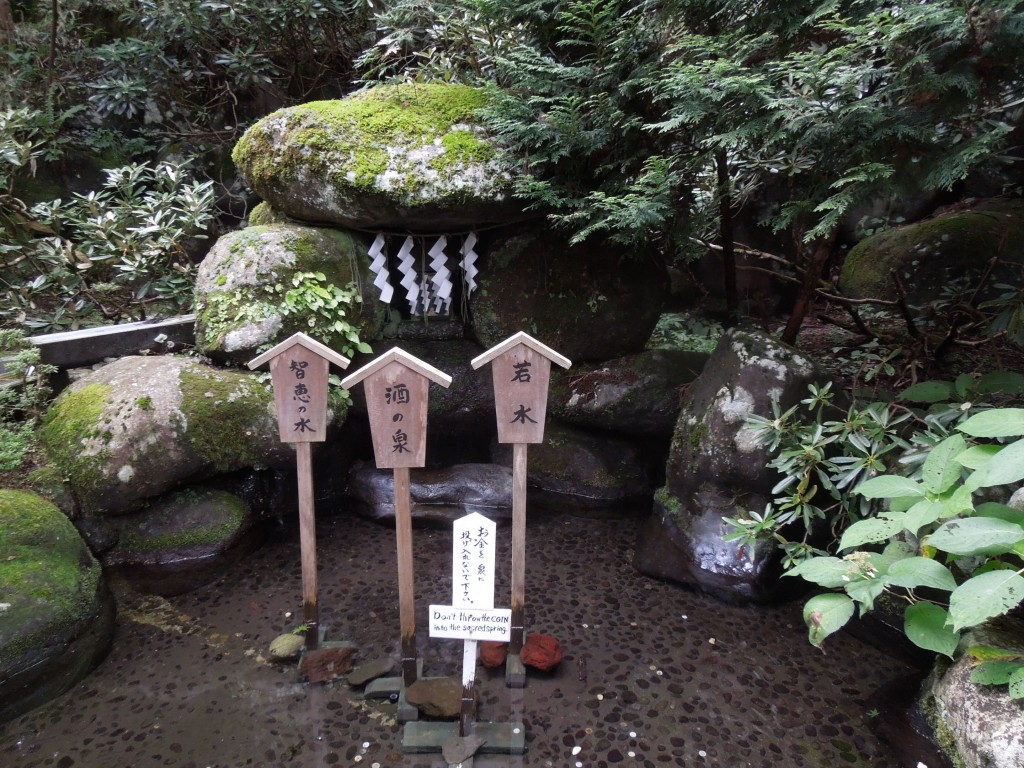
No coins, please, in the sacred spring
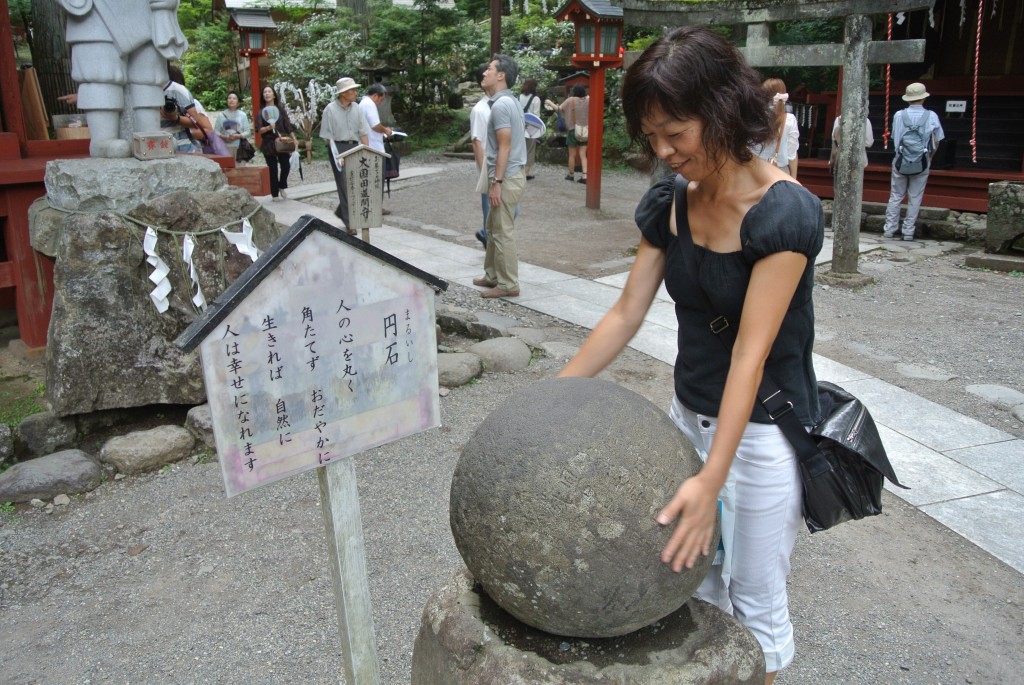
If your heart is as smooth and round as this stone, you will have a good life
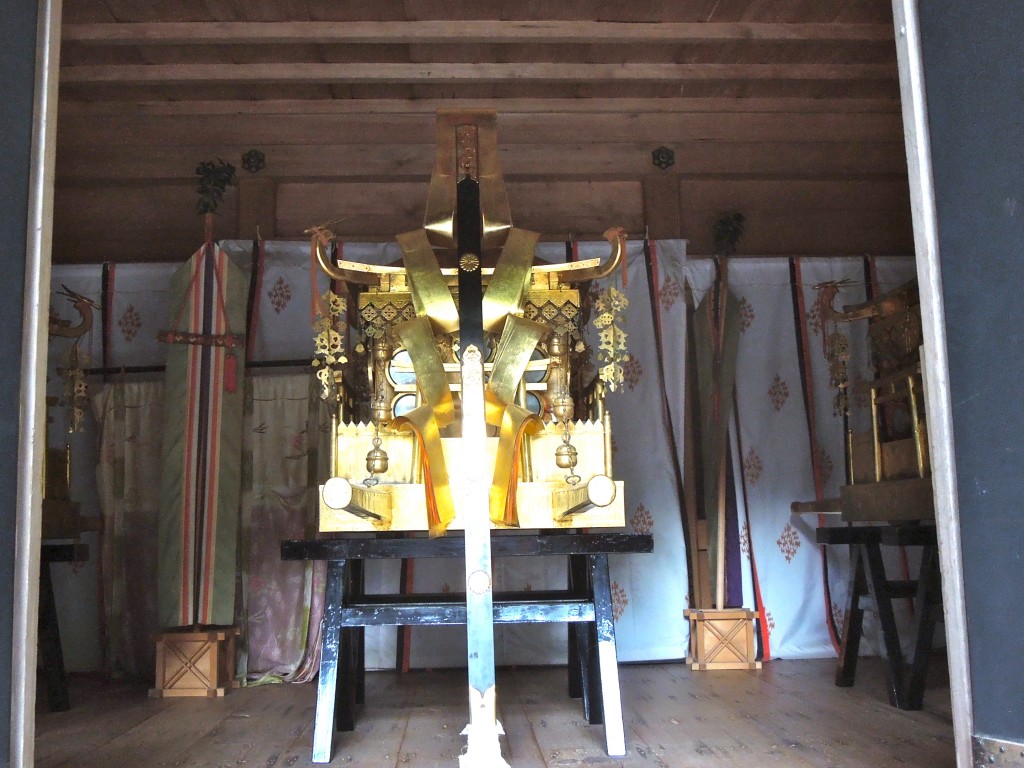
A golden mikoshi for Okuninushi

This blog is fantastic! I’m really excited to learn about your books, too! I sure wish my local Junkudo or Kinokuniya carried them…All I ever see are old, boring texts that have little to do with the history of specific shrines, or Shinto timeline. I’ve got to see if I can get my hands on your books about it! I live in Osaka and am just really starting to uncover the wonder of Japanese shrines. It’s so great to have access to so many great ones from here! :) I’ll be reading your blog regularly. Do you mind questions at all?
Thank you, Janus, for the kind words. Please feel free to ask questions….